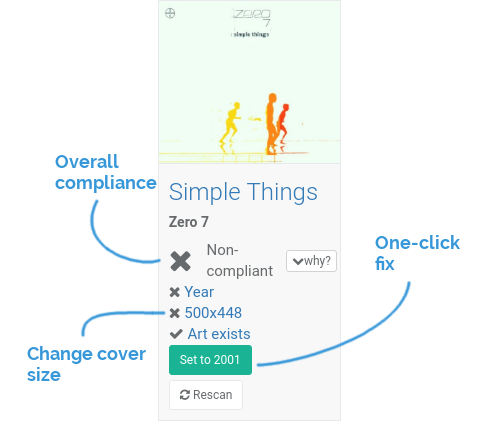The ripper that was used for many years was Vortexbox (VB)running on an Atom 330 dual core Mini-ITX. This did stirling service, but finally gave up and was replaced with a Micro-ATX core2 box.
Installing VB was easy – both via ISO and (just for laughs – sad I know!) USB. Apart from having to manually expand the file storage system and do the first update & upgrade via ssh command line the installation is easy. One thing that was strange was that despite using a 2.4 version image for both the ISO and USB sources I still ended up with version 2.3. A basic issue with VB is that you don’t get to upgrade to new versions – you can update the basic OS, but version changes require a clean install.
Basic configuration via the very dated UI is quick and easy allowing updates and basic network/IP settings to be done.
The UI also allows for installation of additional services – Plex, Subsonic, Bliss as well as the native Logitech Media Server (LMS) for serving up the ripped goodness,
Configuration is mostly via manual editing of the config file located in the /etc/ripit/ directory. This allows you to specify the output filetype of the rip – FLAC. mp3, ogg etc etc as well as the quality level. If you just want to rip to FLAC and then output a copy to mp3 as well, then the best option is to setup the FLAC encoder via the config file and then just use the FLAC mirror option in the GUI to create the mp3 version. If you want multiple versions every time or ‘non-standard’ formats, then you can tell the config to perform simultaneous rips to different formats.
File naming convention is also configured via the config file as is the details of which ripping engine to use and where the files get saved.
If you want to save your rips to another machine you will have to wander into the belly of the Linux beast and install the appropriate driver to talk to the remote machine (cifs ntfs etc etc), mount the device to an appropriate place and then tweak the config to use that location. Further discussions are in this forum thread.
Metadata seemed to be accurate and reliable, although the ‘get the CD cover’ button failed to do anything that I could see. It definitely didn’t get any covers – I ended up trying Bliss to deal with that issue – more on Bliss in another post.
While I like the ability to create a FLAC and then automatically make the mp3 at the same time, the UI is dated and not as pleasant as Daphile. Granted, once configured, the box is probably running without the GUI open as it is designed to just accept the disk and go, but personally I keep the webpage open so I can monitor what it is doing.
I’m currently running VortexBox as the main ripper and I think I’ll keep it for now as re-ripping the entire library to FLAC with an appropriate mp3 is quicker than manually creating the mp3 every time.
Links
VortexBox – www.vortexbox.org
Installation CLI commands are here
Network drive mounting discussion here
